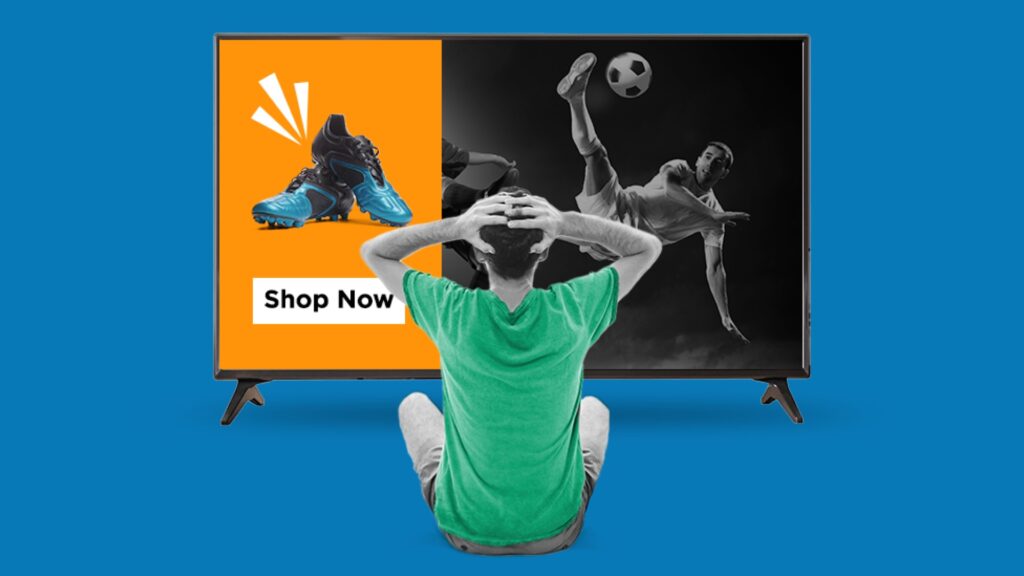The Future of (C)TV Is Now
by Jaci Schreckengost
4 Min Read
CES 2024: Stagwell (STGW) and MNTN Announce Partnership in Unified Performance SolutionsLearn More
Connected TV already has attribution models that track the consumer journey to help optimize ad campaigns — so what does that mean for shoppable TV?

4 Min Read
As the WGA and SAG-AFTRA strikes continue to drag on, one question has crossed many minds: at this point, does the fall TV season even matter?
Once a rite of passage for the year, the fall season usually meant tons of new TV content and related events for viewers to enjoy (and advertisers to capitalize on ahead of the holidays). But with the strikes halting production on any new shows, and the rising prominence of streaming drawing many viewers away from the standard linear TV lineup, this may just be the year we forget all about fall television and focus on Connected TV. After all, many viewers are already busy catching up on Suits — a show that came out more than 10 years ago.
For advertisers who depend on a more traditional approach to fall TV — perhaps in anticipation of the fast approaching holiday season — there still are a few saving graces According to Ashwin Navin, co-founder and CEO of Samba TV, while viewers may have already made the shift to streaming for scripted programming, “What continues to keep linear afloat and will help it weather the impact of the strikes are sports and news.” And networks know it — ABC recently added 10 Monday Night Football simulcasts to its schedule.
But most advertisers don’t plan to put much emphasis on the fall TV season anyways, as expressed by one anonymous buyer to Adweek: “The seasonality of our advertisers’ businesses is important, [not] the seasonality of TV.”
In the meantime, one strategy advertisers and streaming platforms have been exploring to make an impact with their seasonal campaigns is shoppable TV.
You may remember one example of shoppable TV, which broke the internet at the time of its debut. CoinBase’s infamous ad from the Big Game last year, which featured nothing but a QR code bouncing around the TV screen, was an attempt to catch viewer attention by being, well… bland. But the technology has come a long way in a short time, and now it looks like a number of platforms are upping their shoppable TV game.
One such example, Peacock’s Must ShopTV (love the name), allows consumers to purchase products they see in shows with an AI-powered ad view that covers half their TV screen. Roku has also gotten in on the shoppable TV game, partnering with Shopify to allow viewers to learn more about a product in an ad simply by pressing “OK” on their remotes.
“Everybody’s very excited about the reality that we’re using smart TVs to enable full-funnel activity because it is basically another computer in the house with a gorgeous screen,” said Kelly Metz, managing director, advanced TV activation, Omnicom Media Group in an interview with Adweek. “There’s no better way to shop for certain items.”
But the real question is: is it even necessary?
While these new shoppable ad formats are fun in theory, these services are going to great lengths to develop an ad product that only works in their own apps and will require multiple technology integrations. And while the potential to snag impulse buyers is indeed enticing, brands trying shoppable formats risk ruffling the feathers of some viewers with a compromised viewer experience.
What advertisers should really be looking out for? Outcomes-based measurement on TV.
Simply put, we shouldn’t need a whole new ad medium for a channel as effective as Connected TV. With CTV advertising, marketers can already reach those impulse spenders with granular audience data — they can measure their ads’ impact on specific audiences, then use that data to optimize their strategies and creative moving forward. Basically, CTV measurement already helps advertisers make better ads to drive conversions and refine strategies for future campaigns. There will always be a need to innovate, but why reinvent the wheel here?
Some CTV advertising partners can even allow you to leverage their platforms to do it automatically. For example, with automated optimization technology, all you have to do is enter your budget and goal, and it can optimize your campaign over 651,000 times a day to drive performance.
And when it comes to CTV attribution, there are ways to measure campaign results that actually align with consumer behavior — as seen through Verified Visits™ on the MNTN platform. By tracking the online behavior of a viewer after they watch an ad on CTV, the attribution technology helps advertisers understand their path to conversion.
All that and more is already available through CTV advertising — without interrupting the viewer’s watch experience.
Other CTV News You Need to Know: